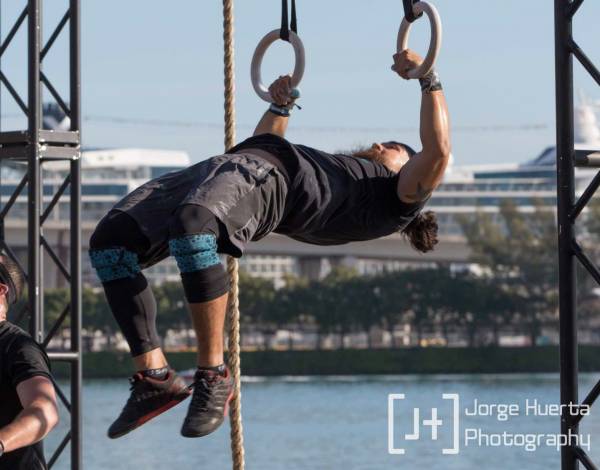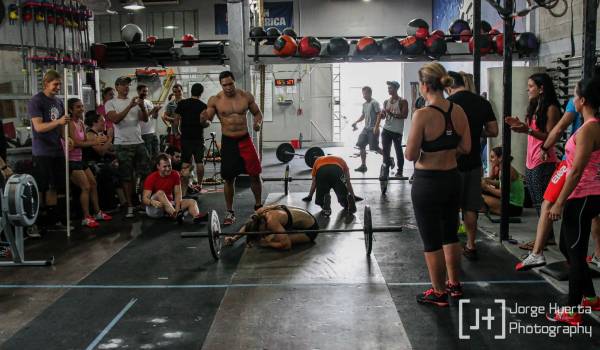Every day around the globe, young and old alike are waltzing into their local boxes, declaring their dreams to “go to the Games.” And every day around the globe, box owners groan in equal parts bemusement and frustration, as they hear these words pronounced yet again.
How do you tell Jo Average, who thinks she’s “pretty fit” and has just walked in off the street, pumped and motivated after watching some CrossFit Games footage on ESPN, that she has zero to no hope of making it? Less than 1% of participants in the Open actually make it to the Games. Ask yourself which is more likely – are you part of the 1% or the 99%?
What’s Required to Make It to the Top?
For Jo Average to have a chance, a minimum of four to five years of double training days (for a total of four to six hours per day) is required to achieve the standard we see at the Games today. And it’s guaranteed that in another four to five years, that standard will have improved again dramatically. So, how the hell does Jo Average break in or catch up to the game?
If you’re not already in the sport of CrossFit or if you don’t have a high-level sporting background (preferably in gymnastics or weightlifting), then the outlook is as bleak as it could be.
“We won’t see the days of unknowns breaking into the ranks of Games athletes ever again. If you do the work, they’ll see you coming for years.”
I qualified for the 2011 CrossFit Games as an individual after six months in the sport. I had a high-level sporting background; I was seriously fit and naturally strong; I had a bulletproof mental game; and I employed solid recovery practices. That was enough back then. At that time, I honestly didn’t know what the Games were, I hadn’t intended to go, and I hadn’t single-mindedly worked toward qualifying. It all just fell into place.
We won’t see the days of unknowns breaking into the ranks of Games athletes ever again. If you do the work, they’ll see you coming for years. This is now a professional sport and athletes devote themselves full time to their Games preparations. The breadth, depth, and level of skill, strength, endurance, mental resilience, self-discipline, recovery practices, and nutritional commitment required to make it to the top are uncompromising and unforgiving.

Think about these things:
- If you’re working hard, your competition is working harder.
- Injury is a matter of when, never if. Can you handle it? Do you have a team around you to keep you strong and healthy? Do you have adequate recovery practices to cope with the training demands?
- Do you have the courage to go to that dark place, over and over, day after day? Will you seek out and swallow pain without faltering?
- Do you have the self-belief to fight on, year after year, despite the odds and evidence against you?
- Do you have the total support of friends and family? Without their support, you’ll never make it.
- Are you willing to give up your social life, give up the drink, get to bed early, and train when your mind says no or your family wants you to spend time with them? There is no way to add in the training without removing other things from your life.
- Can you handle the pressure of competition and the stress of multiple days of battle? Does your support crew travel with you to keep you strong and healthy, as well as calm and focused?
- Are you willing to discipline your nutritional habits? Can you give up sugar, dairy, wheat, and processed foods?
- Do you have the mental fortitude to remain calm in the face of failure and seeming defeat? Think back two years to Camille Leblanc-Bazinet’s rower not working in the final event or Rich Froning’s public frustration during the rope climb. Do you have the strength to handle that with dignity?
- Do you beat yourself up when you fail reps? While seeking to improve is important, you need to have a positive inner dialogue, not berate yourself constantly.
- Do you have an unquenchable fire and drive to succeed?
- Do you have absolute faith in yourself and your chosen path despite the critics and haters?
- Can you live for your dream on negligible income?
- Do you have a bulletproof sense of the ridiculous?
- Can your body handle the volume and intensity of the physical work required?
- Are you insane enough to keep coming back for more, with no promise of reward or recognition?

Perception Versus Reality
The dream of being a CrossFit Games athlete and the reality of being a CrossFit Games athlete are two entirely separate experiences. One is all glory and magnificence in the limelight, while the other is all suffering and uncertainty alone in a dark box.
“Being a Games athlete is rarely fun. It’s massive volumes of grimy work. It is ultimately rewarding, but it is an unforgiving and brutal way of life.”
I say that anyone willing to step up has great courage. To box owners faced with what to tell these motivated fans declaring their Games dreams, I say tell them to seriously consider the above points before embarking on what will be a multi-year journey.
CrossFit was originally about minimal dosage for maximum results, about community, and about fun. Being a Games athlete is rarely fun. It’s massive volumes of grimy work. It is ultimately rewarding, but it is an unforgiving and brutal way of life.
Related Articles:
- What the CrossFit Games 2015 Changes Mean for You
- 3 Lessons We Can All Learn From the CrossFit Games
- A CrossFit Games History Lesson
- What’s New on Breaking Muscle UK Today
Photos courtesy of Jorge Huerta Photography






